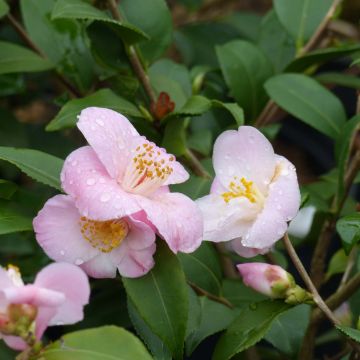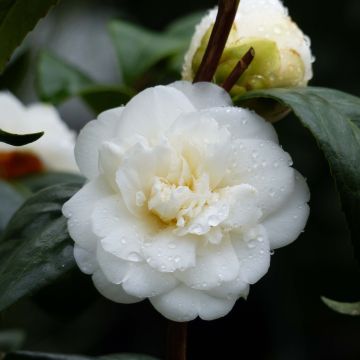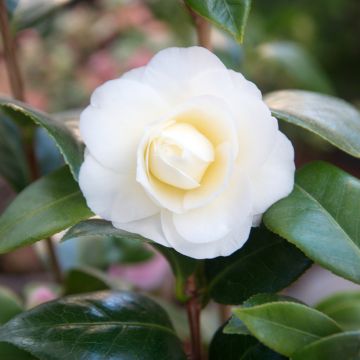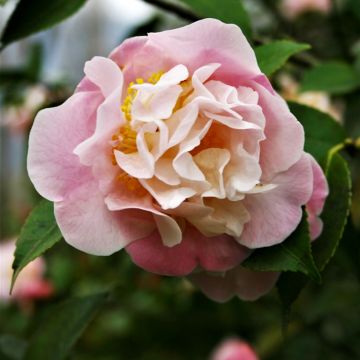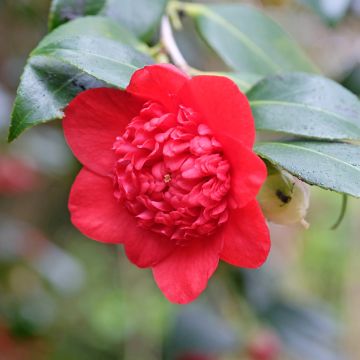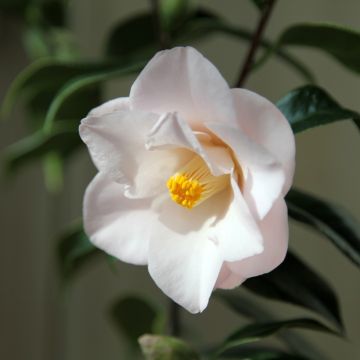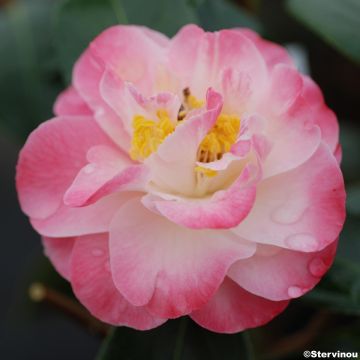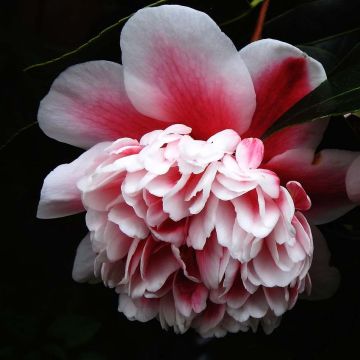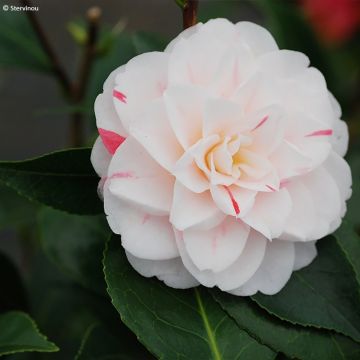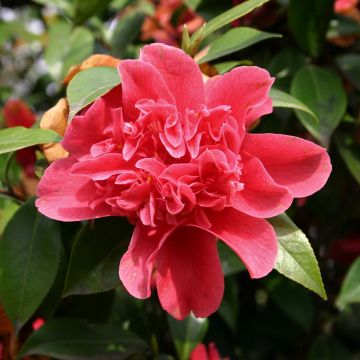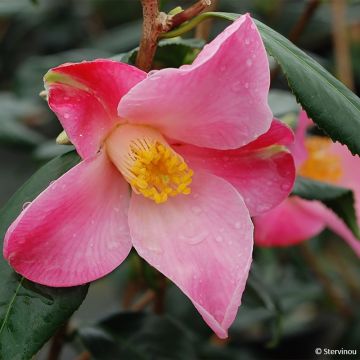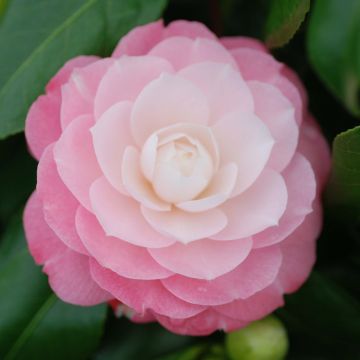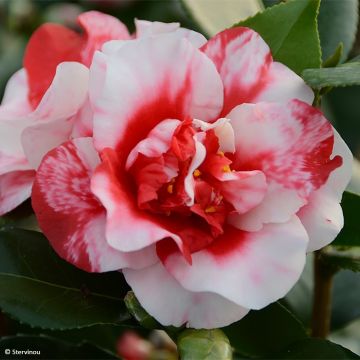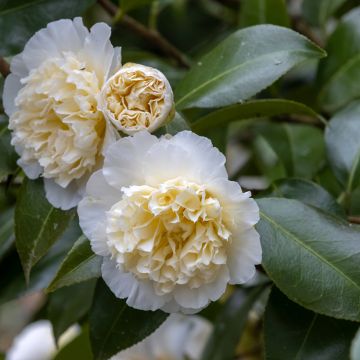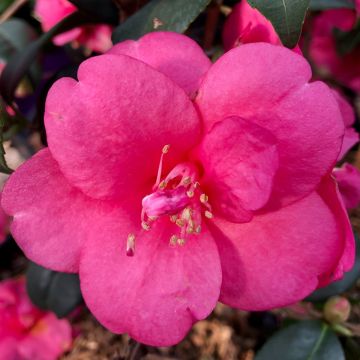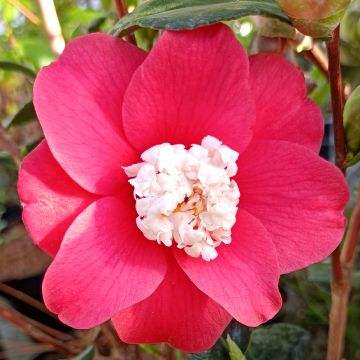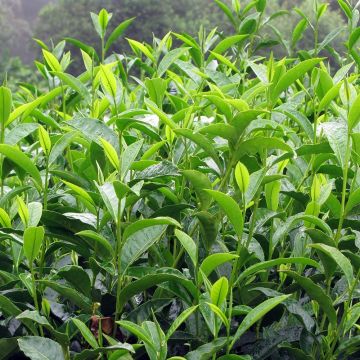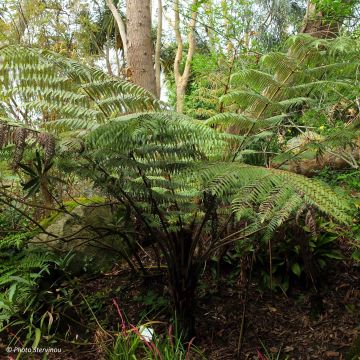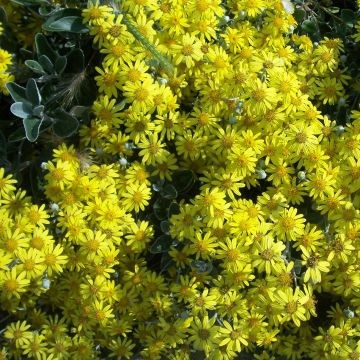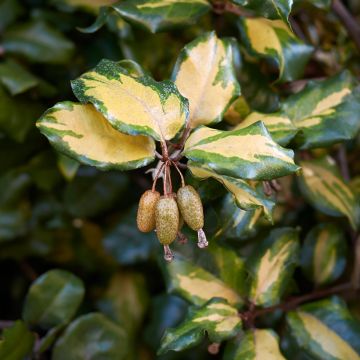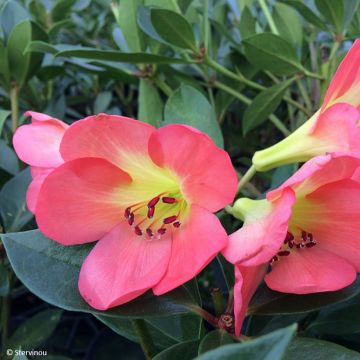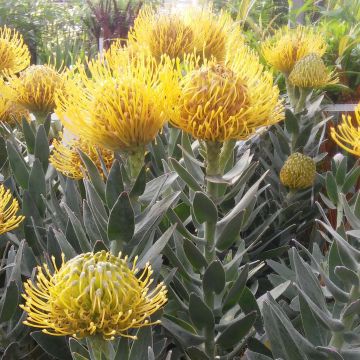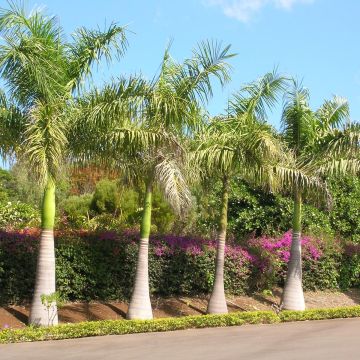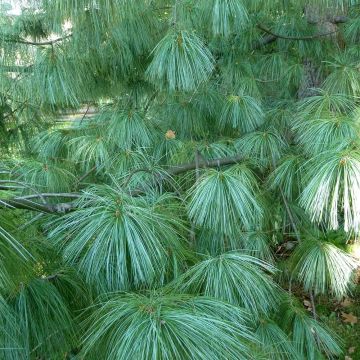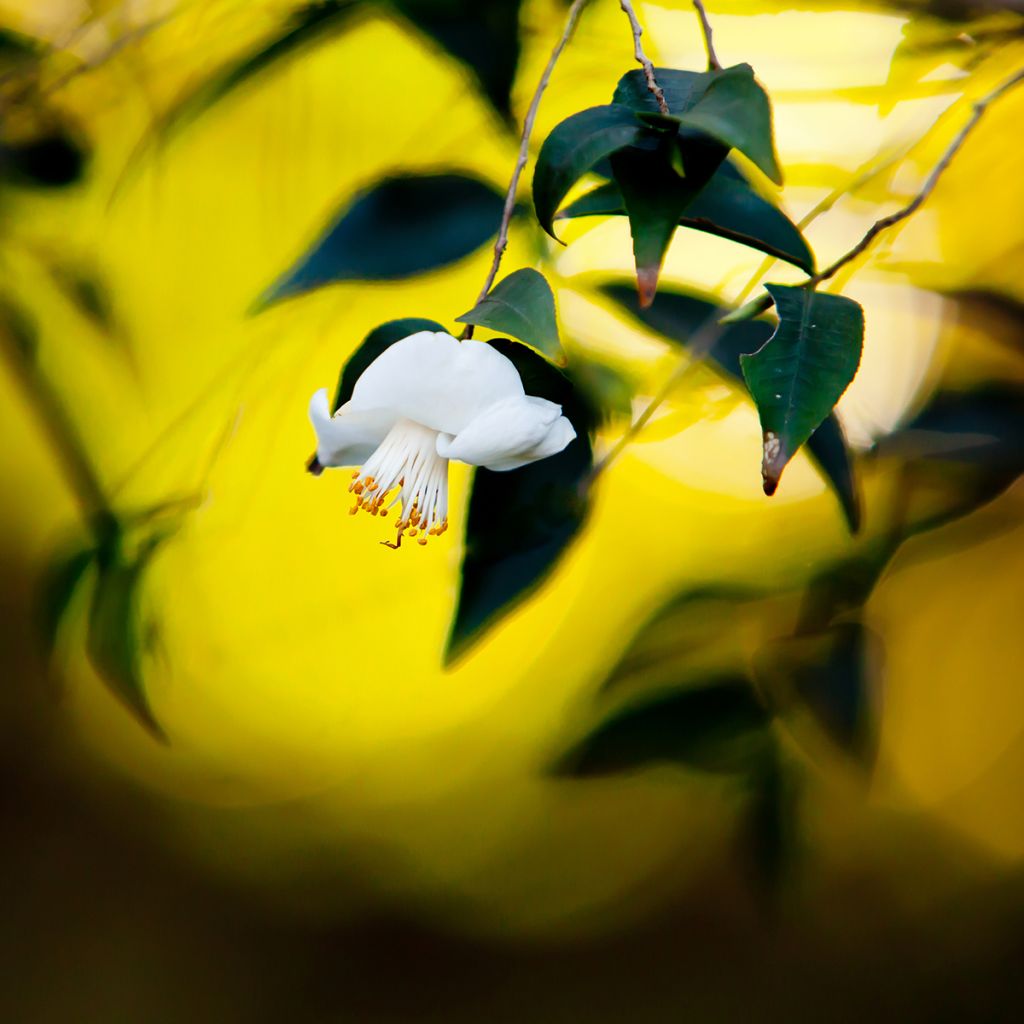

Camellia tsaii - Camélia d'hiver
Camellia tsaii
Camellia tsaii
Special offer!
Receive a €20 voucher for any order over €90 (excluding delivery costs, credit notes, and plastic-free options)!
1- Add your favorite plants to your cart.
2- Once you have reached €90, confirm your order (you can even choose the delivery date!).
3- As soon as your order is shipped, you will receive an email containing your voucher code, valid for 3 months (90 days).
Your voucher is unique and can only be used once, for any order with a minimum value of €20, excluding delivery costs.
Can be combined with other current offers, non-divisible and non-refundable.
Why not try an alternative variety in stock?
View all →This plant carries a 24 months recovery warranty
More information
We guarantee the quality of our plants for a full growing cycle, and will replace at our expense any plant that fails to recover under normal climatic and planting conditions.
Would this plant suit my garden?
Set up your Plantfit profile →
Description
Camellia tsaii is a botanical variety close to the Asian Tea plant, with both its foliage and flowers having ornamental value. Its elongated and narrow leaves have a beautiful dark green colour with a glossy texture, and turn bronze-brown in winter. The flowers, although small in size, are abundant and appear from late February and last for about 2 months. Fragrant and decorative, they have a cluster of yellow-tipped stamens. A beautiful bush for mild and humid climates, where it thrives under moderate sunlight or partial shade in warmer conditions. It requires a non-calcareous, moist soil and should be planted in a sheltered location away from the wind.
Camellia tsaii belongs to the Theaceae family, which includes around ten or twenty genera depending on the classification, with the most well-known in ornamental gardens being the Camellia. The most economically important species is the Camellia sinensis, which is used for tea production. Camellia tsai is a species close to the Tea plant, native to Yunnan (a province in southern China with a predominantly subtropical climate, but with different climates coexisting), northern Vietnam, and Myanmar (Burma). It is found at altitudes of 1500 to 2600 m (4900 to 8500 ft), growing in evergreen forests and thickets. In these climates it forms a large evergreen bush or a small tree, reaching heights of 7 to 8 m (23 to 26 ft). The species was named in 1938 by the botanist Hu and introduced to France in 1976.
Camellia tsaii will thrive in mild and humid climates. Typically forming a medium-sized bush, approximately 2.50 m (8 ft) in all directions, it can reach heights of 3 to 5 m (10 to 16 ft) under favourable growing conditions. Its dense branching is slightly trailing, giving it a natural and delicate appearance. The leaves are elongated, measuring 8 to 10 cm (3 to 4 in) in length and 2 to 3 cm (0.8 to 1.2 in) in width, with a pointed tip. They have a dark green colour with a glossy texture, undulating margins, and finely toothed edges, carried by a short petiole. Very decorative, this foliage can resemble certain indoor Ficus plants and takes on bronze tones, especially in winter.
The single flowers appear from late February to April, either solitary or paired. The corolla is composed of 5 petals of immaculate whiteness, with an approximate diameter of 4 cm. From the centre a cluster of white filaments with yellow tips emerges, giving depth to the flower. Fragrant and abundant, the flowers create a beautiful spectacle heralding spring. Their colour forms a lovely contrast with the dark foliage, evoking a sense of romance. Despite its geographical origin, this Camellia is relatively hardy, tolerating temperatures down to -12°C once mature.
As an ornamental bush the Camellia tsaii is attractive for its habit, foliage, and winter flowering. It will thrive in a natural garden setting. You can plant it alongside other plants that prefer acidic and moist soil, such as the Itea ilicifolia, a rarely seen evergreen shrub with foliage resembling holly, which produces astonishing summer blooms in the form of long spikes of small yellow flowers. The delicately scented white winter flowers of Sarcococca orientalis will precede the Camellia's and provide a companion fragrance. To complete the picture, a few clumps of Black Anemone Oriental Hellebore will add a touch of dark colour, or Green Anemone, with its charming anise green flowers.
Report an error about the product description
Camellia tsaii in pictures


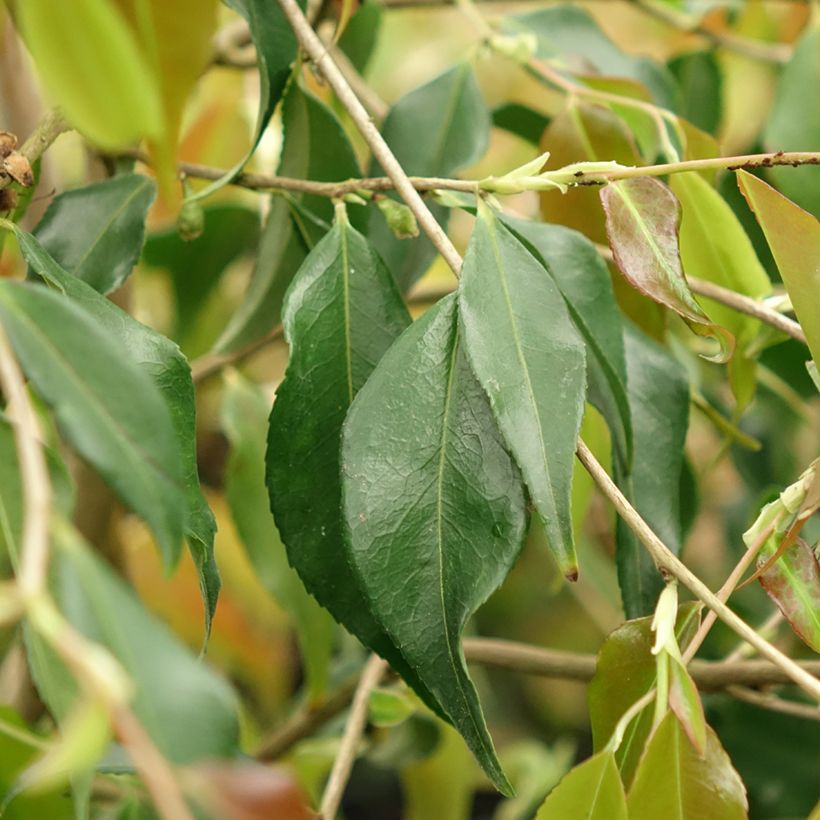

Plant habit
Flowering
Foliage
Botanical data
Camellia
tsaii
Theaceae
East Asia
Other Traditional Camellia
View all →Planting and care
Camellia tsaii is hardy down to -12°C (10.4 °F) at the lowest, for a well-established subject and that has been sheltered from cold winds. It is perfect for an oceanic, mild and humid climate. The greater the temperature variations (in a continental or alpine climate), the more the bush suffers and the less it thrives.
Preferably plant in March-April. It prefers non-chalky soil rich in organic matter. Slightly acidic forest soil, or well-drained clay-silica soil enriched with humus, will be perfectly suitable. The soil must be loose, light, and well-drained, to allow water passage and root aeration. Clayey, heavy, compact soils are to be avoided.
Place the camellia in a non-scorching sunny site. It needs brightness but will not tolerate a very hot southern exposure in summer - in this case partial shade will be preferable. Be careful to protect it from prevailing winds by planting near a wall, ot it could lose some of its blooms. Do not plant the bush too deeply; the top of the root ball should be covered with 3 cm (1.2 in) of soil, just enough to prevent it drying out. Water abundantly, then cover the soil with a mulch of bark.
Before the arrival of winter, protect the roots that mainly develop on the surface by covering the base with a thick mattress of dry leaves mixed with sand, or any other insulating material (pine bark, flax or hemp flakes, etc.). In the event of a snowfall, take the time to clear snow from the leaves by shaking the bush, to avoid it burning the foliage and weakenening the bush. It is not necessary to prune this camellia, which will take on a beautifully poetic and free form without it.
Planting period
Intended location
Care
This item has not been reviewed yet - be the first to leave a review about it.
Similar products
Haven't found what you were looking for?
Hardiness is the lowest winter temperature a plant can endure without suffering serious damage or even dying. However, hardiness is affected by location (a sheltered area, such as a patio), protection (winter cover) and soil type (hardiness is improved by well-drained soil).

Photo Sharing Terms & Conditions
In order to encourage gardeners to interact and share their experiences, Promesse de fleurs offers various media enabling content to be uploaded onto its Site - in particular via the ‘Photo sharing’ module.
The User agrees to refrain from:
- Posting any content that is illegal, prejudicial, insulting, racist, inciteful to hatred, revisionist, contrary to public decency, that infringes on privacy or on the privacy rights of third parties, in particular the publicity rights of persons and goods, intellectual property rights, or the right to privacy.
- Submitting content on behalf of a third party;
- Impersonate the identity of a third party and/or publish any personal information about a third party;
In general, the User undertakes to refrain from any unethical behaviour.
All Content (in particular text, comments, files, images, photos, videos, creative works, etc.), which may be subject to property or intellectual property rights, image or other private rights, shall remain the property of the User, subject to the limited rights granted by the terms of the licence granted by Promesse de fleurs as stated below. Users are at liberty to publish or not to publish such Content on the Site, notably via the ‘Photo Sharing’ facility, and accept that this Content shall be made public and freely accessible, notably on the Internet.
Users further acknowledge, undertake to have ,and guarantee that they hold all necessary rights and permissions to publish such material on the Site, in particular with regard to the legislation in force pertaining to any privacy, property, intellectual property, image, or contractual rights, or rights of any other nature. By publishing such Content on the Site, Users acknowledge accepting full liability as publishers of the Content within the meaning of the law, and grant Promesse de fleurs, free of charge, an inclusive, worldwide licence for the said Content for the entire duration of its publication, including all reproduction, representation, up/downloading, displaying, performing, transmission, and storage rights.
Users also grant permission for their name to be linked to the Content and accept that this link may not always be made available.
By engaging in posting material, Users consent to their Content becoming automatically accessible on the Internet, in particular on other sites and/or blogs and/or web pages of the Promesse de fleurs site, including in particular social pages and the Promesse de fleurs catalogue.
Users may secure the removal of entrusted content free of charge by issuing a simple request via our contact form.
The flowering period indicated on our website applies to countries and regions located in USDA zone 8 (France, the United Kingdom, Ireland, the Netherlands, etc.)
It will vary according to where you live:
- In zones 9 to 10 (Italy, Spain, Greece, etc.), flowering will occur about 2 to 4 weeks earlier.
- In zones 6 to 7 (Germany, Poland, Slovenia, and lower mountainous regions), flowering will be delayed by 2 to 3 weeks.
- In zone 5 (Central Europe, Scandinavia), blooming will be delayed by 3 to 5 weeks.
In temperate climates, pruning of spring-flowering shrubs (forsythia, spireas, etc.) should be done just after flowering.
Pruning of summer-flowering shrubs (Indian Lilac, Perovskia, etc.) can be done in winter or spring.
In cold regions as well as with frost-sensitive plants, avoid pruning too early when severe frosts may still occur.
The planting period indicated on our website applies to countries and regions located in USDA zone 8 (France, United Kingdom, Ireland, Netherlands).
It will vary according to where you live:
- In Mediterranean zones (Marseille, Madrid, Milan, etc.), autumn and winter are the best planting periods.
- In continental zones (Strasbourg, Munich, Vienna, etc.), delay planting by 2 to 3 weeks in spring and bring it forward by 2 to 4 weeks in autumn.
- In mountainous regions (the Alps, Pyrenees, Carpathians, etc.), it is best to plant in late spring (May-June) or late summer (August-September).
The harvesting period indicated on our website applies to countries and regions in USDA zone 8 (France, England, Ireland, the Netherlands).
In colder areas (Scandinavia, Poland, Austria...) fruit and vegetable harvests are likely to be delayed by 3-4 weeks.
In warmer areas (Italy, Spain, Greece, etc.), harvesting will probably take place earlier, depending on weather conditions.
The sowing periods indicated on our website apply to countries and regions within USDA Zone 8 (France, UK, Ireland, Netherlands).
In colder areas (Scandinavia, Poland, Austria...), delay any outdoor sowing by 3-4 weeks, or sow under glass.
In warmer climes (Italy, Spain, Greece, etc.), bring outdoor sowing forward by a few weeks.






























